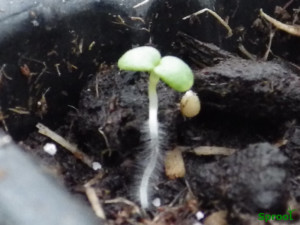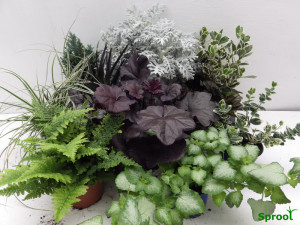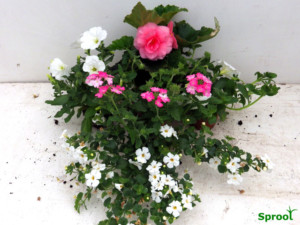Protect your seedlings
When I started gardening many years ago, seed was always sown into seed trays and followed by pricking out.
Pricking out stations manned by nimble fingered ladies where found on all nurseries, their speed and skill could make the difference between making money or losing it.
Modern bedding plant nurseries now use a robotic transplanter, super fast and accurate, some can plant 40,000 plugs per hour, but they need plug plants not seedlings to work,
Plug plants
Plug plants have some great advantages, the roots are protected in a little cell, if disease breaks out it won’t spread, the roots form into a little root ball that is easy to plant.
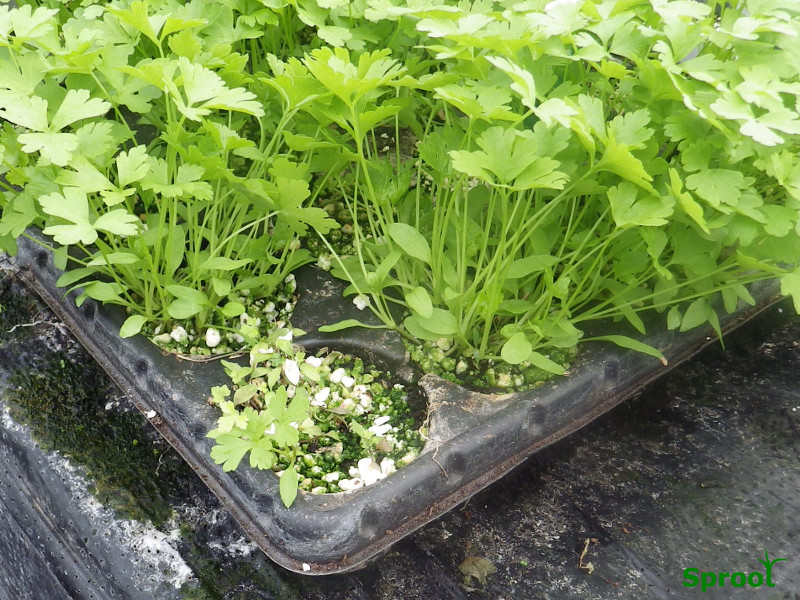
Some parsley one cell has some disease problems but it has not spread to the other cells
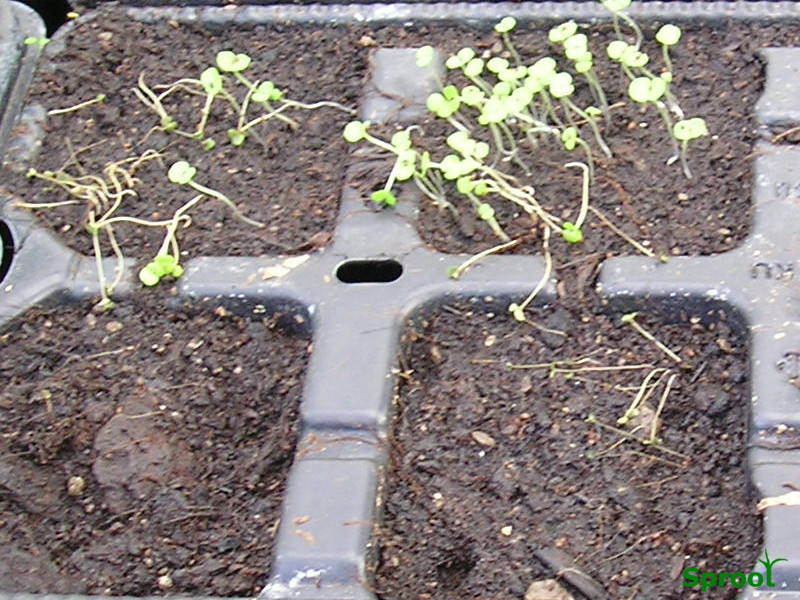
Pythium stem rot easily spread by watering, but the cell wall has stopped it spreading.
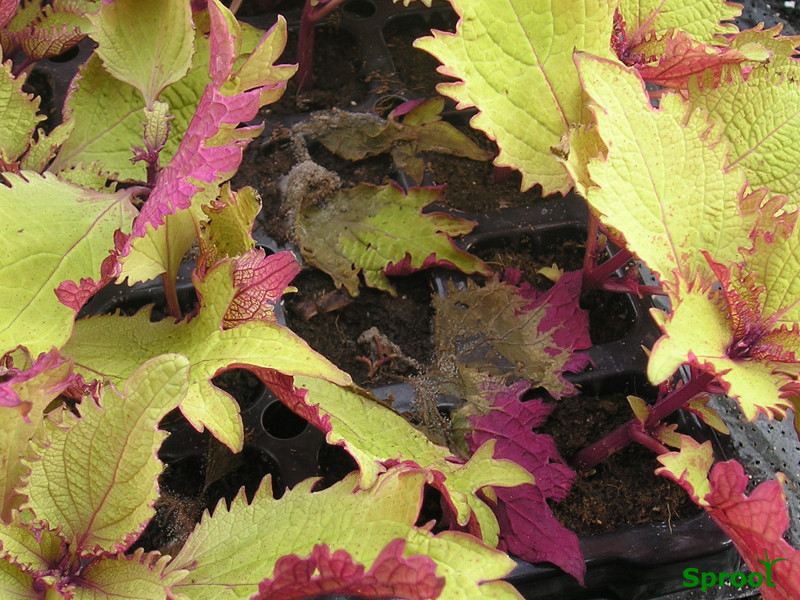
The tops are also protected, the cells are spaced evenly, if Grey Mould starts, it is difficult for it to spread by touching, also you can quickly remove diseased plants if needed.
The plug trays we receive have been run through a machine that checks the size and shape with a camera, then using compressed air any faulty plugs are removed and a transplanter fills up the gaps
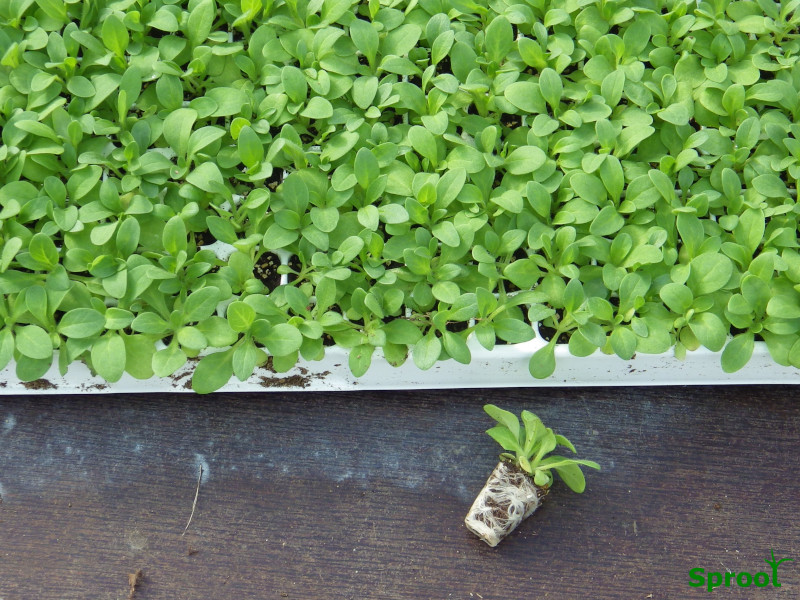
The plug tray allows the little seedling room to develop a bushy habit with a good root system, when it has grown and filled the plug there is no need to prick out into another tray it can go straight into the final pot.
How does this help you with your gardening, if you sow your seed into a plug tray you can miss out the pricking out stage. You can allow the seedling to develop and grow in the plug tray this could be as long as 6-8 weeks.
Think how much heating and space you could save by growing in plugs. If you use a bedding 6 pack or 9cm pots you will get about 160 plants per metre an 84 cell plug tray would be 560 per metre.
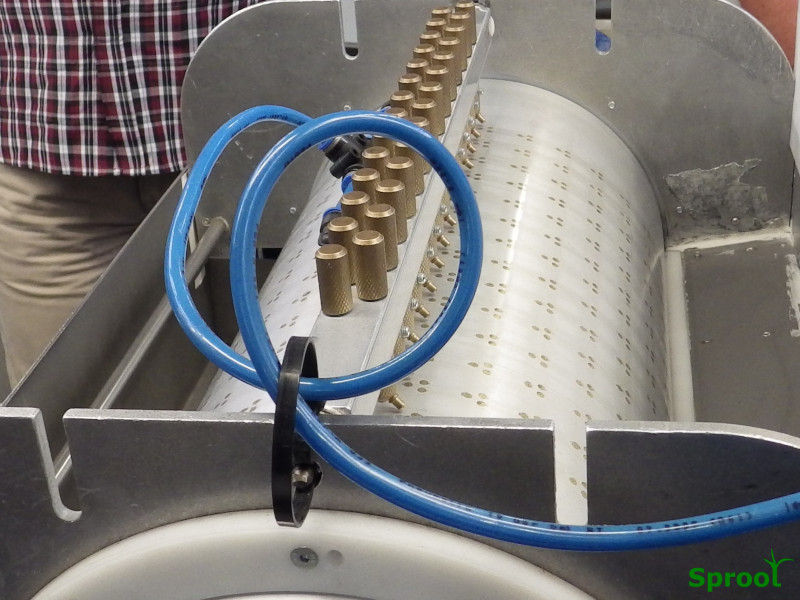
Using special seed sowing machines the suppliers can sow individual or groups of seed in each plug over 9,000 per hour, you can do the same but more slowly, just sow one seed per plug by hand or use our damp stick sowing trick.
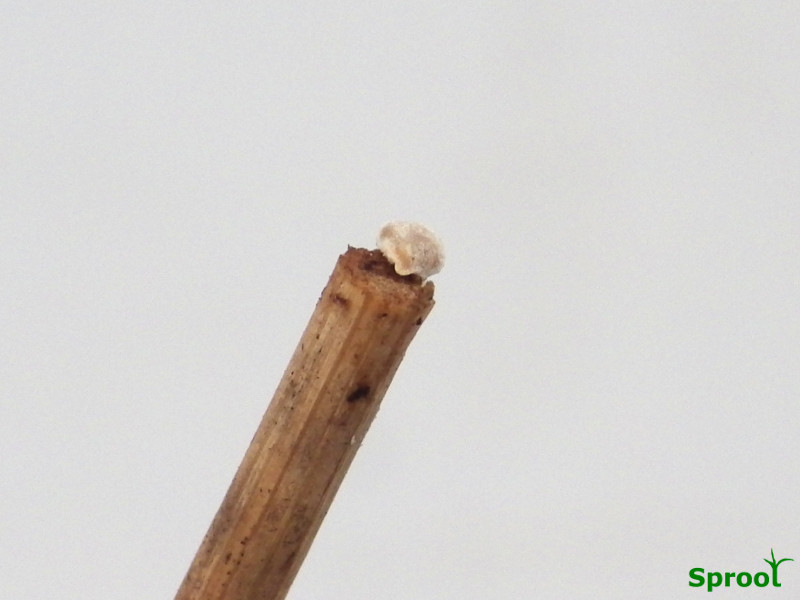
Seed sowing with a damp stick
A simple way to sow seeds singly or in clumps using only a damp stick….
Buying plug trays
Plug trays can be all shapes and sizes, from very small cells (1cm) to quite large (6cm plus).
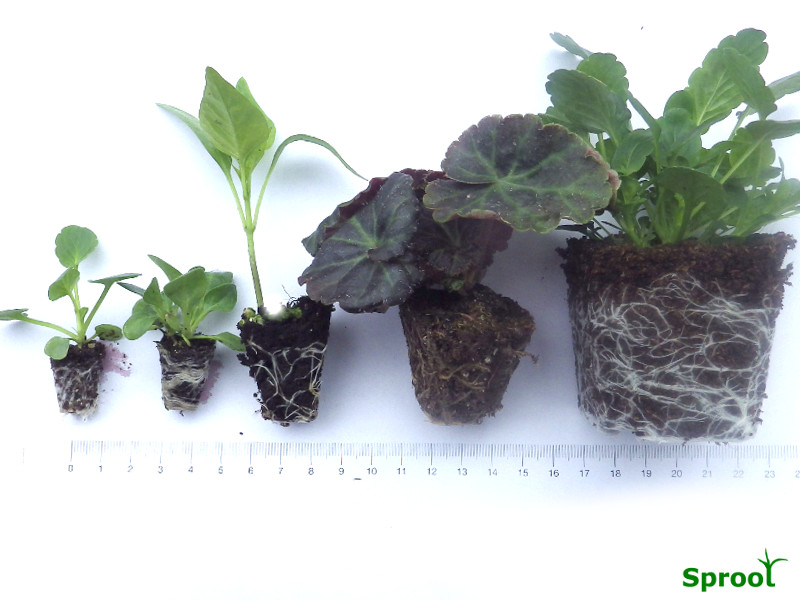
A selection of plug plants from the left 350, 230, 100, 84 trays and a 10 cell bedding pack
They are made of plastic, yes I know its a dirty word, but they have always been made from recycled plastic and can be recycled, check with the local council but most garden centres accept trays for recycling.
The commercial nursery plug trays we buy are available online but are probably too big to be much use, typically 230 to 480 cells per tray, however we use an 72 to 100 tray for our sowing, this has a plug size of 3cm x 3cm and can be found on line.
Plug trays might be seem expensive but they will last for years, we have had some over 10 years old.
A good local grower retailer may sell you some second hand trays at a reasonable price.
You might come across plug trays described as inserts they are very thin and are okay for 1 or 2 years but they also need a carrying tray to support them.
You can also reuse old bedding plant packs, 12 and 20 packs make good big plug trays.
A slightly more specialist tray designed for plants with deep roots often called root trainers, they can be a good choice for vegetables and perennials.
We also use stronger cultivation trays with larger cells 6, 9 or 10 cm they are great for growing bedding plants without pots, the base is shaped to allow the roots to circulate but are easy to push out when planting.

